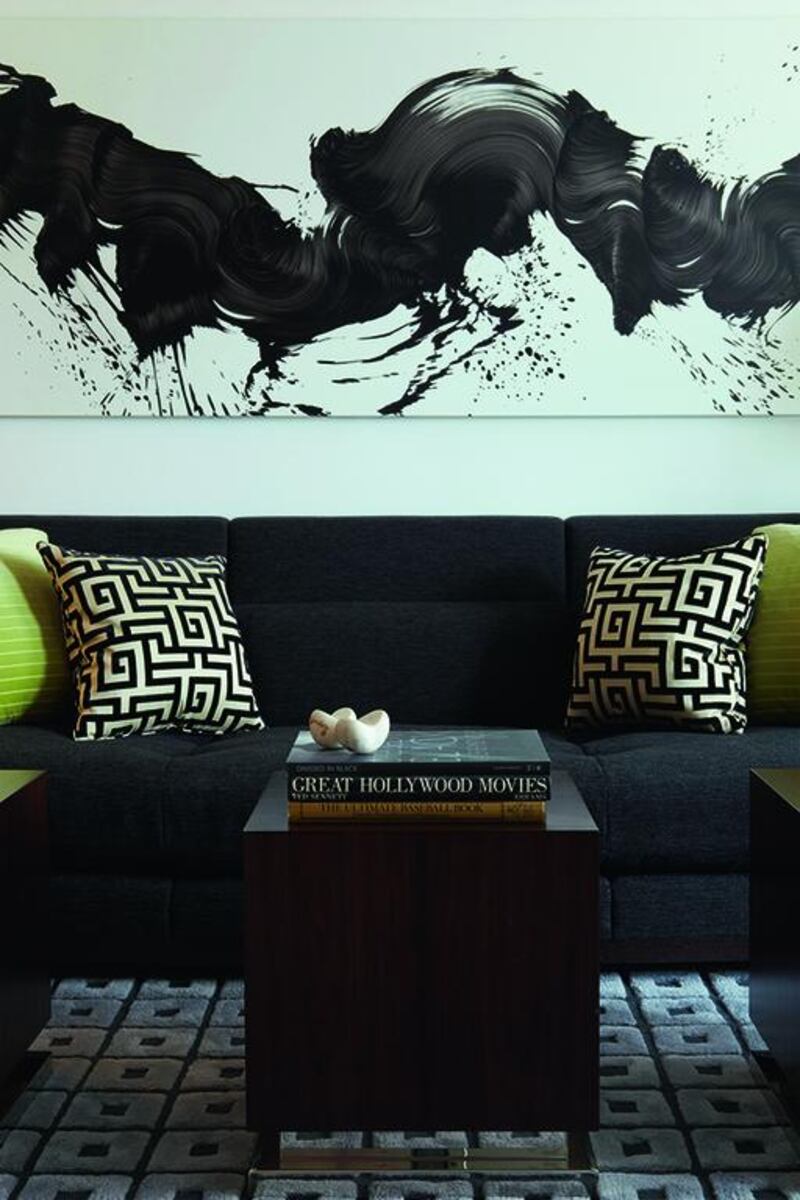The taxi stops on New York's Park Avenue, between 93rd and 94th streets. In the lobby, I'm greeted by a porter, who appears to also double up as a private investigator. I cross the courtyard of the imposing, multistorey building, which is almost a century old.
The wooden lift and entryway into the waiting room serve to keep a sense of the glorious past alive, and then there’s the surprise. The door of the apartment opens into a spacious room that could be an art gallery. There are works by Louise Bourgeois, Thomas Ruff, Jim Hodges and a series of other eminent artists.
“Here, everything was designed with art in mind,” are the first words from the designer, Michael Rosenberg, of the New York-headquartered boutique interiors firm Michael Rosenberg & Associates. Rosenberg, along with his partner Leonard Kowalski, was responsible for the renovation of this Manhattan apartment.
Measuring around 3,767 square feet, the apartment was transformed from a ruin into a family home for four. The owner, whose former home was inclined towards classicism, specifically asked for something contemporary that could accommodate the family’s constantly growing selection of art, which ranges from paintings by Ed Ruscha to sculptures by Jim Lambie.
“We wanted to combine the luxury of the Upper East Side with the lofty nature of downtown,” says Rosenberg. Thus, the spatial planning was completely remodelled, creating open flowing spaces without unnecessary corridors in between, as is customary in properties of this era.
At the same time, for technical reasons such as cabling and ventilation, ceilings were lowered, which helped to create the apartment’s more modern feel.
When it came to furnishings and decorative items, Rosenberg opted for pieces that were contemporary – but not overly so. “Nowadays, everything must be new. But the new will not be new forever,” he says wryly.
To ensure that the interior was not beholden to current fashions and the potential expiration date that comes from being too on-trend, Rosenberg bet on longitudinal pieces. Some have the signature of the prestigious American design brand Holly Hunt; other, more modern pieces were sourced from the house of Knoll, while many were designed and manufactured specifically for the apartment.
The atmosphere, while decidedly modern, also has a touch of the 1940s about it, which is one of the designer’s favourite eras, stylistically. In the dining room, the design team introduced two tables to accommodate the family’s numerous gatherings. They went for Knoll’s iconic Eero Saarinen table, which was paired with chairs by Harry Bertoia.
Walls were painted a fire-engine red to highlight the importance of the collection of black-and-white photographs, by artists such as Hiroshi Sugimoto and Lisette Model, that adorn them. Underfoot, a bold zebra-print carpet ensures that this is a room that makes quite the impression.
In the living room, wood and metal dominate. There is a minimal fireplace and, directly above it, a television that is presented as another piece of art. Sourced from Holly Hunt, most of the furniture in this space was chosen for its simplicity and comfort.
A hearty corner sofa is paired with sumptuous armchairs and a piano for that extra touch of artistry. Above the piano hangs a painting by Ruscha, while the room is also home to an oversized sculpture by Aaron Curry and a colourful piece by Jonathan Lasker.
Taking pride of place above the sofa is an impressive painting by James Nares, while a melancholy-looking Marilyn Monroe by McDermott & McGough peers out from a corner. Overall, the colour scheme is muted – neutral off-whites, soft greens and dark woods create a calming, inviting space that is a direct antithesis to the unashamed brashness of the dining area.
Simplicity is also the order of the day in the bedrooms. Windows look out across the rooftops of Manhattan but within, minimal ornamentation and a neutral colour palette respond to the owner’s desire to have order and tranquility in the family’s sleeping quarters.
There is artwork to be found even in the children’s bedrooms. In the room of the young daughter, gentle shades of pink dominate; a pink floral wallpaper is paired with an imposing four-poster bed, romantic-style paintings and a monochromatic striped carpet.
Indeed, what better than a tranquil home in a city as intense as New York? And Rosenberg, despite designing everything from restaurants to yachts for the rich and famous, is no proponent of overdone, unnecessary design features. “When planning for others, we understand how little you really need,” he says. “Personally, I could live in a glass box.”










